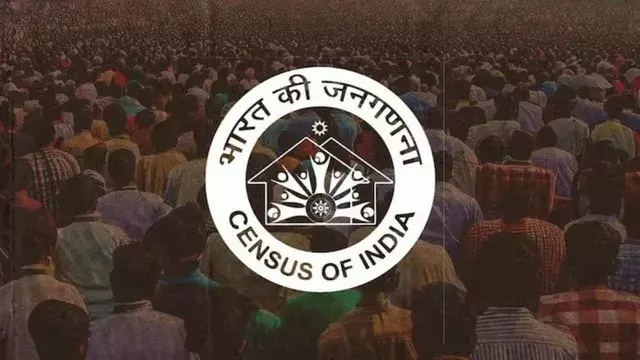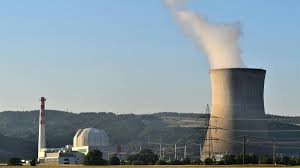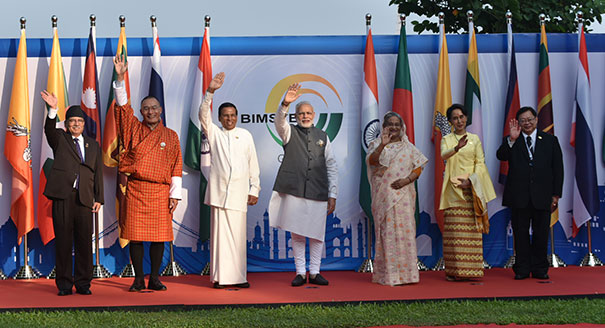- Courses
- GS Full Course 1 Year
- GS Full Course 2 Year
- GS Full Course 3 Year
- GS Full Course Till Selection
- Answer Alpha: Mains 2025 Mentorship
- MEP (Mains Enrichment Programme) Data, Facts
- Essay Target – 150+ Marks
- Online Program
- GS Recorded Course
- Polity
- Geography
- Economy
- Ancient, Medieval and Art & Culture AMAC
- Modern India, Post Independence & World History
- Environment
- Governance
- Science & Technology
- International Relations and Internal Security
- Disaster Management
- Ethics
- NCERT Current Affairs
- Indian Society and Social Issue
- NCERT- Science and Technology
- NCERT - Geography
- NCERT - Ancient History
- NCERT- World History
- NCERT Modern History
- CSAT
- 5 LAYERED ARJUNA Mentorship
- Public Administration Optional
- ABOUT US
- OUR TOPPERS
- TEST SERIES
- FREE STUDY MATERIAL
- VIDEOS
- CONTACT US
Ministry of Jal Shakti released Dynamic Ground Water Resource Assessment Report for the year 2023
Ministry of Jal Shakti released Dynamic Ground Water Resource Assessment Report for the year 2023
Context: - The Minister of Jal Shakti has released the Dynamic Ground Water Resource Assessment Report for the year 2023.
What is Dynamic Ground Water Resource Assessment Report?
- It aims to determine the prevailing status of groundwater resources and the impact of ongoing groundwater management practices.
- The assessment was carried out jointly by Central Ground Water Board (CGWB) and States/UTs
- Previously carried out in 1980, 1995, 2004, 2009, 2011, 2013, 2017, 2020 and 2022. From 2022 onwards it’s being carried out annually.
Central Ground Water Board (CGWB)
It is a national apex organization tasked to carry out exploration, scientific surveys, monitoring of development, management and regulation of country’s vast groundwater resources for irrigation, drinking, domestic and industrial needs.
- It is under Ministry of Jal Shakti
- Established in 1970 by renaming Exploratory Tube wells organization. And was merged with the Ground water wing of Geological Survey of India during 1972.
- Its mandate is to develop and disseminate technologies, and monitor and implement national policies for the Scientific and Sustainable development and management of India’s Ground Water Resources.
Highlights of Dynamic Ground Water Resource Assessment Report 2023
- Increase in ground water recharge: Total annual ground water recharge is 449.08 billion cubic meters (BCM), marking an increase of 11.48 BCM compared to last assessment released in 2022. Major increase is noticed in West Bengal, Assam, Telangana, Chhattisgarh, Karnataka, Gujarat and Bihar.
- Increase in annual ground water extraction: Total annual ground water extraction is 241.34 BCM for the entire country.
- Decrease in stage of groundwater extraction level: Currently stands at 59.23%.
Stage of groundwater extraction is a measure of annual ground water extraction for all uses including irrigation, industrial and domestic purpose.
- Total assessment of 6553 Units
|
Over-exploited units (Indicating GW extraction exceeding annually replenishable GW recharge) |
736 units (11.23%) of total 6553 assessment units in various States/ UTs are Over-exploited. These Units are mostly concentrated in:
|
|
‘Critical’ units (GW extraction between 90- 100%) |
199 (3.04 %) assessment units. Accounts for 3 % of total recharge worthy area of the country. |
|
“Semi-critical’’ units (GW extraction between 70 -90 %) |
698 (10.65 %) assessment units. Accounts for 12 % of total recharge worthy area of the country. |
|
‘Safe’ units (GW extraction is less than 70 %) |
4793 (73.14 %) assessment units. Accounts for 66 % of total recharge worthy area of the country. |
Status of Ground water in India
- India is the world’s largest user of groundwater in the world
- 21 major cities, including Delhi, Bengaluru, and Chennai, are expected to run out of groundwater by 2020, As per NITI Aayog.
- According to the Central Ground Water Board, groundwater levels in more than 60% of the wells monitored across India have shown a declining trend.
- The Interconnected Disaster Risk Report 2023, issued by the United Nations University – Institute for Environment and Human Security, highlights that certain regions within the Indo-Gangetic basin in India have surpassed the tipping point for groundwater depletion.
- Additionally, projections indicate that the entire north-western region is expected to encounter severely diminished groundwater availability by the year 2025.
- The over-extraction of groundwater for agriculture is evident in states like Punjab, where the groundwater level has been consistently declining, leading to concerns about long-term sustainability.
Reasons for Overall decline in GW in India
- Excessive Agricultural Extraction:
- Agriculture is the largest consumer of groundwater in India, accounting for approximately 89% of the total groundwater extracted.
- The widespread use of unregulated and energy-intensive groundwater pumping for irrigation has led to over-extraction, particularly in states like Punjab, Haryana, and parts of Rajasthan.
- Urbanization and Industrial Growth:
- Rapid urbanization and industrialization contribute significantly to the decline in groundwater levels.
- Increased demand for water in urban areas and the establishment of industries often rely on excessive groundwater extraction, further stressing the available resources.
- Lack of Regulatory Measures:
- Inadequate regulation and enforcement of groundwater extraction policies contribute to over-exploitation.
- The absence of proper monitoring and control mechanisms allows unchecked extraction, exacerbating the depletion of groundwater resources.
- Climate Change Impact:
- Changing precipitation patterns and increasing temperatures associated with climate change affect the recharge of groundwater.
- Irregular rainfall and prolonged droughts reduce natural replenishment, intensifying the stress on existing groundwater reservoirs.
- Inefficient Water Management Practices:
- Inefficient water use practices, such as the absence of water-saving technologies and traditional flood irrigation methods, lead to excessive water consumption.
- The lack of awareness and adoption of sustainable water management practices contributes to the overall decline in groundwater levels.
Impacts of declining Ground water in India
- Declining groundwater hampers crop yields, impacting the livelihoods of millions as 60% of India's net sown area relies on groundwater for irrigation.
- Industries like food processing and textiles face challenges as depleting groundwater affects production processes.
- Depleting groundwater sources contribute to a shortage of safe drinking water, affecting communities across the country.
- Land subsidence from groundwater depletion leads to infrastructure damage, particularly in urban areas like Delhi, Bengaluru, and Chennai.
- Groundwater decline disrupts natural ecosystems, affecting wetlands, rivers, and biodiversity, leading to ecological imbalances.
Ground Water Assessment and Management Initiatives by Government
- Master Plan for Artificial Recharge to Groundwater in India envisions the implementation of nearly 11 million rainwater harvesting and artificial recharge structures to enhance the country's groundwater resources.
- National Aquifer Mapping & Management Programme (NAQUIM) is aimed at mapping major aquifers, characterizing them, and formulating aquifer management plans to ensure resource sustainability. It prioritizes over-exploited, critical, and semi-critical assessment units.
- Watershed Development Programmes: Various State Governments implement watershed development programs, where groundwater conservation is integral. Water conservation measures are also part of the MGNREGA.
- Jal Kranti Abhiyan, launched by the Ministry of Jal Shakti, aims to consolidate water conservation and management initiatives in the country through a holistic, integrated approach involving all stakeholders.
- Atal Bhujal Yojana aims to improve groundwater management in identified water-stressed areas in parts of a few states with emphasis on demand management and community participation.
- Pradhan Mantri Krishi Sinchai Yojana (PMKSY) ) - Har Khet Ko Pani envisions creating irrigation potential from groundwater in assessment units with sufficient scope for further development.
- Jal Shakti Abhiyan is characterized by the expeditious execution of five interventions: water conservation and harnessing of rainwater, revitalization of traditional and contemporary aquatic ecosystems, recycling and replenishment of water, watershed development, and deliberate augmentation of afforestation efforts.
Suggestions for improving Groundwater Management:
- Shift to Water-Efficient Crops: Encourage a shift away from water-intensive crops. For instance, in Gujarat, farmers are recognizing the importance of transitioning from crops like cotton and wheat to alternatives such as pomegranates and cumin. These crops not only require less water but also offer favorable market prices.
- Adopting One Water Approach: Transitioning focus from linear water management to a multi-dimensional integrated water management strategy (One Water approach) to achieve a comprehensive, resilient, and sustainable management of water resources.
- Estimating Future Availability: Utilize groundwater modeling to project future availability, considering changing climate patterns and extraction practices. This can provide insights into the sustainable use of groundwater resources.
- Promote Community Participation: Recognize that groundwater conservation involves millions of individuals, and thus, communities should play a central role. This involves integrating scientific knowledge with traditional wisdom to enhance the effectiveness of conservation efforts.
- Policy-Level Interventions: Implement policies to address the water-energy nexus, such as separating agricultural electrical connections from household connections. Introduce fixed timings for agricultural electricity availability to manage water usage effectively. Recommendations from the Mihir Shah Committee, such as specifying drilling depth and distance between wells, can guide corrective measures.
- Governance Restructuring: Consider restructuring institutions responsible for water management. The Mihir Shah Committee suggests the formation of a new National Water Commission by reorganizing the Central Water Commission and the Central Ground Water Board. This unified body is envisioned to facilitate collective management of both ground and surface water.
- Demand-Side Interventions: Implement interventions on the demand side, including surface water harvesting through the creation of farm ponds and check-dams. Additionally, encourage the adoption of water-efficient irrigation systems, such as more effective drip and sprinkler systems, to optimize water utilization in agriculture.
Conclusion
The Groundwater Resource Assessment Report for 2023 emphasizes positive trends and challenges, emphasizing the necessity for a comprehensive and sustainable approach to groundwater management in India. This approach should incorporate technological innovation, policy restructuring, and community participation to ensure long-term water security.
Must Check: Best IAS Coaching In Delhi



